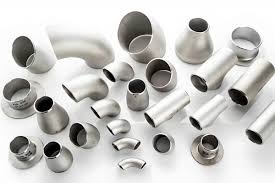When it comes to industrial piping systems, the strength, durability, and integrity of your connections matter just as much as the pipes themselves. Whether you’re dealing with high-pressure steam lines, chemical processing plants, or oil and gas infrastructure, choosing the right type of pipe fitting is crucial. The two most common types you’ll encounter are buttweld fittings and forged fittings—each with their own benefits, applications, and considerations.
So how do you decide which one is right for your project? Let’s break it down.
What Are Buttweld Fittings?
Buttweld fittings are welded directly to the pipe, forming a strong, permanent joint. They come in a wide range of shapes including elbows, tees, reducers, and caps. These fittings are typically manufactured from seamless or welded pipe and are available in various schedules (wall thicknesses) to match your piping needs.
Key Benefits:
- Smooth flow: The gradual transition in diameter reduces turbulence and pressure drop.
- Strong, leak-proof connection: The weld forms a unified piece with the pipe.
- Ideal for high-pressure, high-temperature environments.
- Aesthetic and space-efficient: Clean profile with no protrusions.
What Are Forged Fittings?
Forged fittings are made from solid blocks of steel that are shaped under extreme pressure and then machined to precise dimensions. They are typically used for small diameter pipes (up to 4 inches) and come in threaded or socket-weld variants.
Key Benefits:
- Exceptional strength due to the forging process.
- Easier installation, especially for small bore piping.
- Cost-effective for low-pressure systems or non-critical applications.
- Ideal for maintenance or temporary installations.
Buttweld vs. Forged: Key Differences
| Feature | Buttweld Fittings | Forged Fittings |
| Connection Type | Welded end-to-end | Threaded or socket-weld |
| Pipe Size Range | Medium to large | Typically small (<4”) |
| Strength & Pressure | High-pressure rated | Medium to high, depending on class |
| Installation | Requires welding expertise | Easier to install, especially threaded types |
| Cost | Higher upfront cost | Generally more economical |
| Applications | Process piping, power plants, refineries | Compressed air, water, small utility lines |
When to Choose Buttweld
- For critical applications where reliability is non-negotiable.
- When working with high temperatures or pressures.
- If your project requires clean internal flow or minimal pressure loss.
- For permanent installations that demand long-term strength.
When to Choose Forged
- For compact piping layouts or smaller pipe diameters.
- When you need quick installation or replacement.
- In systems where welding may not be feasible.
- For low to moderate pressure applications that are cost-sensitive.
Conclusion: Match the Fitting to the Function
There’s no one-size-fits-all answer when choosing between buttweld and forged fittings—it depends entirely on your application’s pressure, temperature, size, and installation environment. Understanding the pros and cons of each will help you select the best fitting for safe, efficient, and cost-effective performance.
Consult with a piping specialist or engineer to make the best choice for your specific needs—because in piping, connections are everything.
Let me know if you’d like a version tailored for a specific industry like oil & gas, construction, or shipbuilding!


Common Flange Materials and Their Uses in Different Industries
Flanges play a vital role in piping systems—serving as connection points for pipes, valves, pumps, and other equipment. While their design is critical, the material from which a flange is made is equally important. The choice of material affects the flange’s strength, corrosion resistance, temperature tolerance, and suitability for specific media and environments. Different industries […]